By Eric Vandebroeck
Two years ago, all hell broke loose on the heads of
the Rohingya as Myanmar military launched so-called 'clearance
operations' which were really a search and destroy mission against any
Rohingya person in northern Rakhine state. In 2018 already a United
Nations-backed Fact-Finding Mission found
sufficient information to warrant the investigation and prosecution of
senior military officials for grave crimes, including genocide, in Rakhine
State.
Then on 8 August 2019
in a staggering verdict, the U.N. Independent International Fact-Finding
Mission on Myanmar in a new report (A/HRC/42/50)
stated that there will be no long-term peace in Myanmar and no return of
Rohingya refugees unless there is accountability for the “brutality” of the
Asian country’s military forces.
And while the latter
report was first announced on 4 July 2019 during a meeting in London it should
not come as a surprise the sudden willingness of the government of Myanmar to
start bringing 3,000 Rohingya
refugees who are facing increased hardships back, so they as is claimed,
can live on their ancestral land in Myanmar whereby Min Thein, director of
Myanmar’s social welfare ministry, added
that security measurements are now in place for returning refugees.
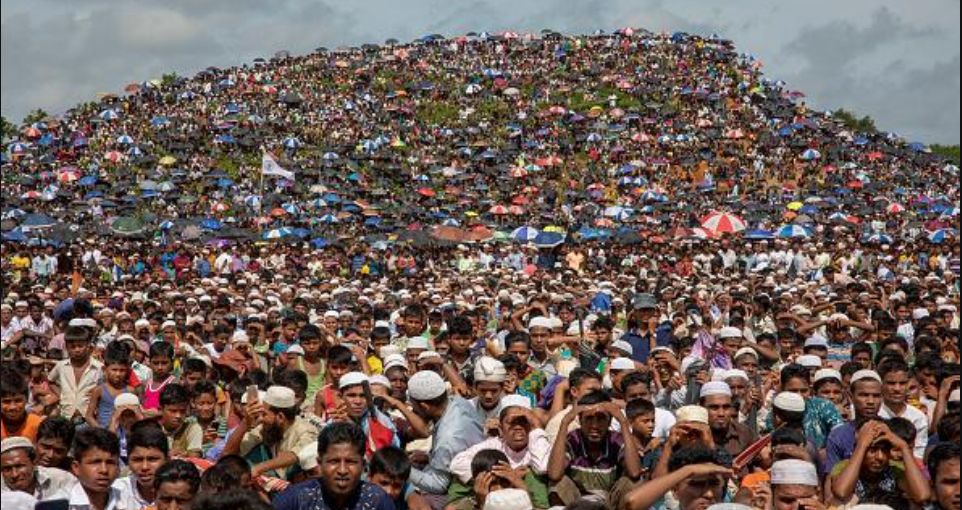
That is until a
revealing BBC report was aired
on 9 Sep. exposing it in what best can be described as a sham. An
experienced BBC correspondent Jonathan Head was able to find evidence that, far
from welcoming the Rohingya back, the authorities In Rakhine state have been
erasing all trace of their villages. And validates why
Rohingyas are scared of returning home as Myanmar by no means has created a
conducive environment.
The BBC saw four
locations where secure facilities have been built on what satellite images show
were once Rohingya settlements all while officials denied building on top of
the villages in Rakhine state this in spite of the
presentation of evidence that proved otherwise.
As Jonathan Head
reports: "The only visible preparations for a large-scale refugee return
are dilapidated transit camps like Hla Poe Kaung, and relocation camps like Kyein Chaung. Few refugees are likely to overcome the
trauma they suffered two years ago for that kind of a future. It raises
questions over the sincerity of Myanmar's public commitment to take them back.
I was able to meet a
young displaced Rohingya on my way back to Yangon. We had to be discreet;
foreigners are not allowed to meet Rohingyas without permission. He has been
trapped with his family in an IDP camp for seven years, after being driven out
of his home in Sittwe, one of 130,000 Rohingyas
displaced in a previous outbreak of violence in 2012.
He is unable to
attend university, or to travel outside the camp without permission. His advice
for the refugees in Bangladesh was not to risk coming back, and finding
themselves similarly confined to guarded camps." Thus the so-called
repatriation plan is nothing but a scheme designed to whitewash the Myanmar
military’s crimes and to help it escape accountability."
In a report published
on 16 Sept. the UN fact-finding mission said that 600,000
Rohingya in Myanmar continue to live under threat of genocide.
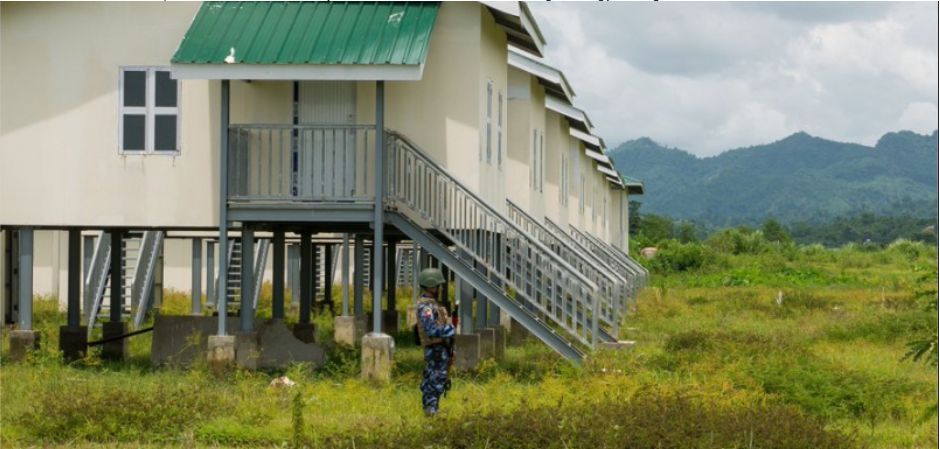
Above Kyein Chaung relocation camp in northern Rakhine State,
where Rohingya refugees could be resettled. But an existing Rohingya village
was demolished for this, one of the dozens erased from the landscape since
2017."
The politics of statelessness
In effect, the battle
for independence was also a battle for ethnic supremacy, and that lies at the
heart of this current crisis. The Rohingya were never accepted.
“They are not really
Burmese. They are Bangladeshis,” said Aung San Suu Kyi to former UK Prime
Minister David Cameron, as featured in his new book today.
This is an example of
how the present-day Myanmar government misrepresents existing real and invented
disputes about the Rohingya.
Rohingya's initially
came to be lumped in with Indian Muslims (specifically Chittagonians)
in Burmese and Rakhine nationalist rhetoric in the 1930s and 1940s and thus the
Muslim population came to be considered the colonizing other. This whereby
Buddhist Rakhines in the colonial legislature in
Rangoon post-1937 already began to differentiate themselves from their Muslim
neighbors, but it was really in the Japanese invasion
when the battle lines were drawn and the Muslims (who supported the
British) and the Buddhists (who supported the Bamars
& Japanese) separated into distinct communities.
Trying to bring the
ongoing discussion to a conclusion in August 2017, a commission chaired by Kofi
Annan issued a comprehensive set of recommendations, including lifting all
restrictions on the Rohingya, and offering them a path to citizenship, that, if
implemented, could go a long way toward improving the Rohingya’s safety and
legal standing in Myanmar.
Reference is here to
Myanmar's 1982 Citizenship Law that says only people of 135 ethnic groups
identified by the state are citizens of the country. These are the groups which
settled in Myanmar before 1824 when the British first occupied the country. Despite
generations of residence in Myanmar, the Rohingya are not considered to be
amongst these official indigenous races and are thus effectively excluded from
full citizenship.
Setting aside the
absurdity of counting ethnic groups for a moment, the figure of 135 ethnic
groups in Myanmar as suggested by experienced Myanmar researcher Bertil Lintner
is propaganda, crafty by the Tatmadaw to divide various ethnic groupings into
smaller constituent units. Late British censuses counted around 20 groups.
The first official
list of all 135 national races was produced just prior to the 2014 national
census. The list mentions a dozen different “national races” in Kachin state,
nine in Kayah state, 11 in Kayin state, 53 in Chin state, nine separate ethnic
Bamar groups, one in Mon state, seven in Rakhine state and 33 in Shan state.
Some like Lintner
suspect the military divined the supposed number of national races through
numerology. When the SLORC junta declared there were exactly 135 national
races, some analysts noted that the three digits – 1, 3 and 5 –summed equal the
number 9, the military’s supposedly lucky number symbolizing unity.
Under previous
military regimes, major decisions were almost always taken on dates whose
digits added up to the number 9. The 1988 military takeover occurred on
September 18 of that year. Then pro-democracy leader Aung San Suu Kyi was put
under house arrest on July 18, 1989, while the later annulled 1990 election her
party won was held on May 27. At one point, Myanmar even had 45 and 90 kyat
banknotes.
Using numerology as a
guide to national peace and unity in a nation with as many diverse ethnic
groups as Myanmar, and where civil war has been raging since independence in
1948, hardly seems like a sensible way forward. A more realistic, fact-based
approach, one which examines why all previous attempts to establish peace and
reconciliation have failed, is clearly needed.
Whether the country
should be a federal union, as most ethnic minority groups demand, or maintain a
highly centralized national structure, as the military believes necessary to
prevent disintegration on ethnic lines, the issue will not be settled any time
soon if there are as many as 135 seats representing each supposed national race
at the peace talks table.
As for the rationale
for rendering the Rohingya stateless boils down to a consensus that the
Rohingya are uninvited guests who have overstayed their welcome.
Countering the
narrative of the leaders of Myanmar recent historical studies have shown that
Arakan, rather them being only recent illegal immigrants, was first settled and
established by "Bengalis," as inscriptions pre-dating the Mranma expansion into the Arakan littoral make clear. Not
to mention that (as suggested
by scholar Kyaw Min Htin) the referent "Rakhine" has been shown
to have been floating and evolving in terms of its meanings. In other words what is now considered the Rohingya ethnicity
emerged in Arakan, to begin with.
Arguing that
arbitrarily choosing 1823 as the cut-off date resonates with a political
purpose and the chosen date appeals to Burmese ethnonationalism because it
negates what occurred under subsequent British colonial rule. Whereby it is an
irony that Myanmar claimed territorial sovereignty over Arakan without actually
giving citizenship to a section of people.
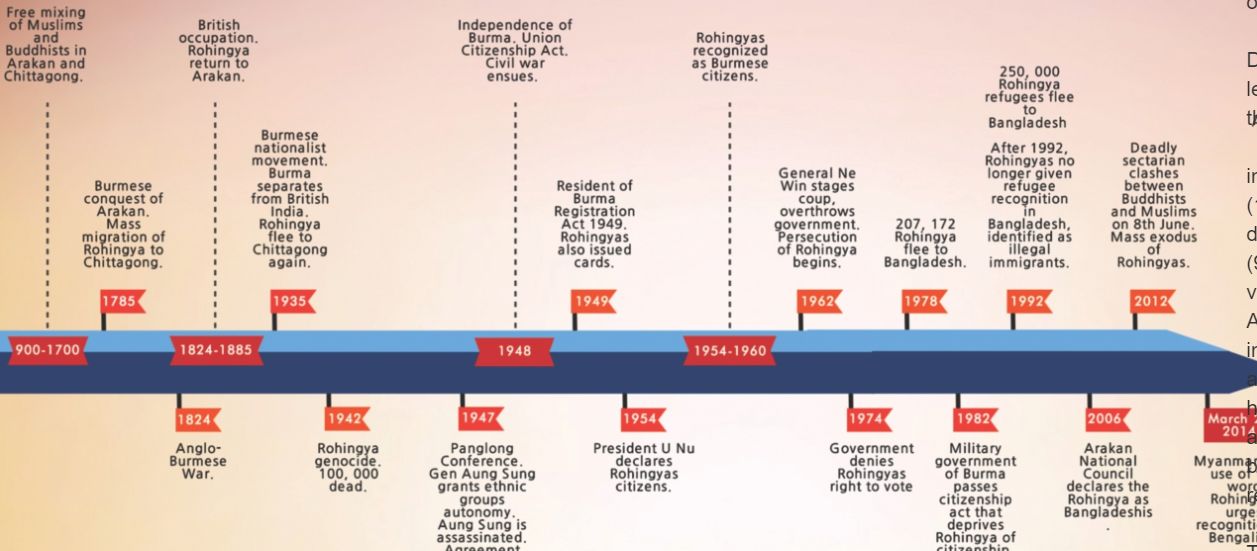
The opportunity military planners in Myanmar were
waiting for
According
to the UN investigation giving military planners in Myanmar the opportunity
they were waiting for on 25 August 2017 a rag-tag group of the Arakan Rohingya
Salvation Army, or ARSA, appeared out of the darkness armed mainly with sticks
and machetes and stormed some thirty police posts, killing about a dozen
Myanmar security personnel in Rakhine State (also known as Arakan State) in
western Myanmar. Apparently (according to the UN investigation), the Myanmar
military responded with overwhelming force and brutality, reportedly killing
and raping civilians indiscriminately and burning villages. Within a few weeks,
under the pretext of “clearance operations” against a population it accuses of
having immigrated illegally from Bangladesh and harboring extremists and
terrorists, the military forced more than half a million Rohingya to flee
across the border into Bangladesh, where they joined another half-million or so
who have fled the apartheid-like conditions and periodic pogroms of recent
years.
Yet despite the
allegations of the military and some Buddhists in the country that this group
is linked to IS there are no links between insurgent groups and Islamic
jihadist groups, and to in addition label ARSA as “Bengali terrorists” to
justify excessive force is distorted and manipulative. ARSA does
not have broader goals related to Islamic fundamentalism, and their stated
purpose is to aid the Rohingya and secure their rights as citizens of Myanmar.
The response of the Tatmadaw has also been disproportionate, killing hundreds
through “area
clearance operations” and displacing over eighty-eight thousand people.
Lastly, the recent Fact-Finding report released by the Office of the United
Nations High Commissioner for Human Rights (OHCHR) noted that the Myanmar
government has published
photos and names of 1,300 supposed ARSA terrorists without due process and
that throughout their interviews, no Rohingya mentioned ARSA as a factor in
feeing Rakhine state. Overall, ARSA is a low-level insurgency group inflicting
minimal casualties on Myanmar forces. Although posing a threat to government
forces, the Tatmadaw has responded in kind with premeditated and ruthless
retaliation against the civilian Rohingya population. This negates the Myanmar
government narrative that the violence in Myanmar is the result of a Rohingya
insurgency. The term “ethnic cleansing” is a broad term to denote cases where
an ethnic, national, or cultural group is being threatened with erasure by
another group. This term has been applied to the Rohingya on numerous
occasions. The United Nations High Commissioner for Human Rights has referred
to the situation in Rakhine state as ethnic cleansing including
that of genocidal intend.
Press freedom besieged
In December 2017 two
Reuters reporters were jailed for doing their job. Their “crime” was
investigating the military's crimes in Rakhine and finding credible evidence of
mass executions of Rohingya by state security forces In January 2019 the appeal
of these reporters, sentenced in 2018 to seven years in jail, was rejected, a
decision with far-reaching consequences for Myanmar’s reputation and freedom
of expression The ruling is thither evidence of the state's determination to
bury the truth about the 2017 atrocities in Rakhine. In May 2019 the reporters
were pardoned and released from prison, but then conviction stands and there
was no apology for the gross miscarriage of justice or for the year and a half
of separation from their families. Whereby striking was also that most
opposed to freeing two reporters was Aung San Suu Kyi. The NLD and "the
Lady" seem to have forgotten how freedom of expression was once a
core value. Critics assert that she has become increasingly authoritarian,
isolated, and intolerant of criticism.
Ronan Lee published a
study showing that the state media publication, the Global New Light of Myanmar
newspaper, has actively produced anti-Rohingya speech in its editions and
influenced violent narratives about the Rohingya Muslims circulating on social
media. It shows how official media contributed to a political environment where
anti-Rohingya speech was made acceptable and where rights abuses against the
group were excused. While regulators often consider the role of social media
platforms like Facebook as conduits for the spread of extreme speech, this case
study shows that extreme speech by state actors using state media ought to be
similarly considered a major concern for scholarship and policy.
The military believes
that as long as it can concoct a scenario of plausible deniability, invoke
terrorism, play up IS links, and conceal the evidence of crimes against
humanity, it can avoid accountability. What makes the Rohingya crisis unique in
comparison to the long list of historic ethnic insurgencies is the way in which
the Central Burmese called Bamar have organically rallied around the government
and military. From anti-government rallies, the last year has for the first
time seen mass pro-government rallies. Thus large numbers of Bamar across many
classes have been involved in online harassment campaigns of anyone who opposes
the brutal treatment of the Rohingya.
Some 65 percent of
the population is ethnic Bamar, but there are more than 100 other ethnicities, dozens
of which have taken up arms over the years." The large number of
non-Bamar parties comprising members of single ethnic groups is a testimony to
the fact that the non-Bamar nationalities prefer to go their own way.
Suu Kyi's current
Bamar led government’s and military’s premise seems to be that “a rising Bamar
tide will lift all ethnic boats”, but in reality, that
isn’t the case. In 2017 a guide at the Shwedagon
Temple in Yangon vigorously
defended Ma Ba Tha (Association for the
Protection of Race and Religion, a Buddhist nationalist group) and the military
campaign against the “Bengali," asserting that the term “Rohingya" is
invented to gain international sympathy.
The Rohingya as invented to gain international
sympathy narrative
As I pointed out before the above Ma Ba Tha narrative is also applied by some scholars, like when a
Harvard university student wrote in the Diplomat “[I]n even a cursory survey of
Rohingya history, it is clear that the Rohingya are not an ethnic, but rather a
political construction…. At stake are issues of legitimacy. The international
community’s use of the term ‘Rohingya’ validates the narrative of essentialising a Muslim identity in Rakhine state”.
They argue that
despite a general understanding that a part of the Arakan Muslims had deep
roots in the country and that Rakhine history cannot be understood without its
social and religious complications with Bengal from the past down to the
present, a pervasive Rakhine narrative about Muslims in Arakan has viewed them
as ‘guests’ who have betrayed the trust of their hosts by claiming territorial
ownership. The claim of a distinctive ethnicity made by Rohingyas is,
therefore, considered by them as fake.
Many such analyses
give a false sense of complexity that seeks to water down murderous ethnic
cleansing and deny any political urgency. Also, as I pointed out in a section
titled "The Rakhine/Rohingya ethnicity
conundrum" a good example of that is represented by an otherwise
respected scholar Jacques P. Leider.
Rakhine histories
here are part of a self-consciously political project to appropriate Arakanese
cultural heritage as their exclusive national patrimony, motivated by the
dramatic collapse of Arakanese power at the hands of Bamar and British invaders
and colonizers. Within the Tatmadaw's ideology, which supplanted "The
Burmese Way to Socialism," is considered a "national race" is
vitally important to be considered equal under the law and in the eyes of the
state. The answer isn't to place Rohingya within this, but to end it. The
problem is that the Burmese defend their apartheid state under the guise of
"national sovereignty," and neither the U.N. or any world power has
any interest in compromising that liberal shibboleth for the sake of a couple
of million persecuted Muslims.
A recently published
article offered some striking imagery of the
two-year Rohingya crisis in three timelapse satellite GIFs.
What to expect next?
Myanmar's position on
the Rohingyas’ designation is as hardline as ever. Zaw Htay, a government
spokesman, said that “action”
will be taken against media and officials who had described the refugees as
“nationals” in their reports or comments ahead of the failed repatriation.
The Ministry of
Construction had apparently used the “nationals” term in a statement quoted by
state-owned media, including the TV and radio station MRTV, the Mirror, Myanmar
Alin and the Global New Light of Myanmar. The MRTV report was aired on August 12
and several newspapers ran it the next day, followed by corrections on August
14.
The UNHCR thus must
be aware that nearly all the Rohingya refugees in Bangladesh are there to stay,
despite
recently giving over 500,000 of them fraud-proof, biometric identification
cards, supposedly as a first step “to safeguard their way home.”
“Most of these people
are stateless and most of these people have not had any form of identification
document, so far the vast majority of the Rohingya refugees, this is the first
ID, a first proof of identity that they have,” UN spokesperson Andrej Mahecic told journalists in Geneva in July. What he failed
to mention was that by admitting that the refugees previously had had no formal
ID cards, they would also be unable to prove any previous residence in Myanmar
and therefore (apart from the token 3,000 Rohingya refugees Myanmar suggested
they are willing to take) not be eligible for repatriation as far as Myanmar
authorities are concerned.
At the same time, resentment
against the Rohingyas is growing in areas south of Cox’s Bazar in Bangladesh,
where most of them are encamped. According to local sources, the influx of
refugees, and international refugee workers, has caused a spike in prices of
basic commodities. Many locals also fear they will lose their jobs as refugees
increasingly sneak out of the camps seeking work for lower-than-local wages.
Forest areas near the densely populated camps have been denuded for building
materials to construct homes and shelters for the refugees. All this while more
Rohingyas made attempts at entering Bangladesh by crossing the River Naff.
Bangladesh’s newfound
hardline approach to Rohingya is unhelpful and misguided, as it assumes
responsibility for the Rohingya’s residence in Bangladesh lies with the
Rohingya themselves instead of Myanmar’s authorities.
However, how much it
would cost Bangladesh as host of the camps if none of the refugees are returned
to Myanmar was not mentioned in the UNDP/PRI report, and that now appears to be
the most likely, and from Dhaka’s perspective, worst case scenario.
Agencies like the
World Food Program have launched
a relief operation to aid thousands of Rohingya refugees whose possessions have
been swept away in the torrential rains that hit Cox’s Bazaar in Bangladesh
this week.
And the UN seems
clear what it wants to do, Radhika Coomaraswamy, a Sri Lankan lawyer who is one
of the U.N. Independent International Fact-Finding Mission three international
experts, cited a number of options: having the Security Council refer the matter
to the International Criminal Court, establishing an ad-hoc tribunal on Myanmar
or having countries with universal jurisdiction use it to deal with the plight
of the Rohingya Muslims who fled military crackdowns to Bangladesh. In
parallel, she said, through the Genocide Convention a demand can be made to
the International Court of Justice for compensation and reparations to the
Rohingya.
During a 17 Sept.
news conference in the Palais des Nations a UN panel stated that Myanmar incurs
state responsibility under the prohibition against genocide and crimes against
humanity, as well as for other violations of international human rights law and
international humanitarian law. And that Myanmar’s civilian leader, Daw Aung
San Suu Kyi, could
face prosecution for crimes against humanity committed by the military.
The finding of “state
responsibility” means that Myanmar should be brought before the International
Court of Justice (ICJ) for failing to honor its obligations under the 1948
Genocide Convention, one of few international human rights instruments it has ratified.
“The scandal of
international inaction has to end,” said Mission Expert Christopher Sidoti.
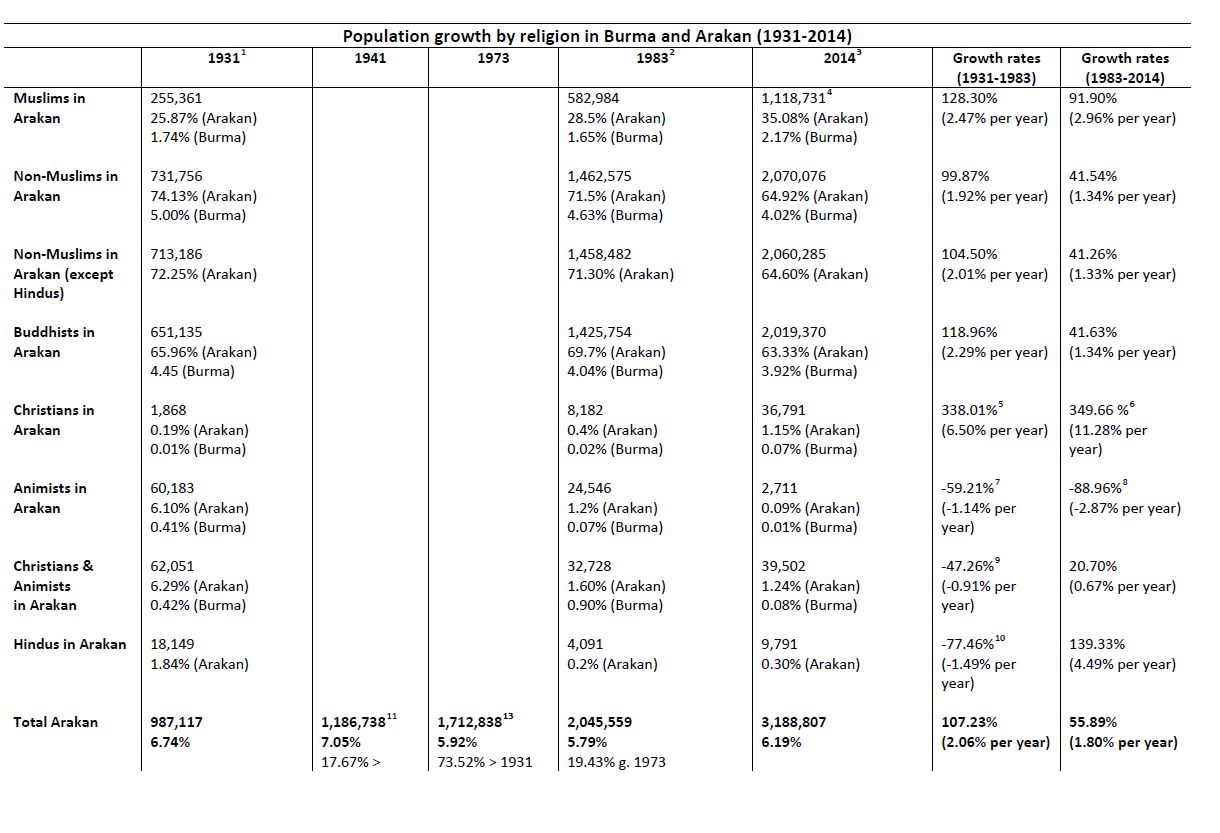
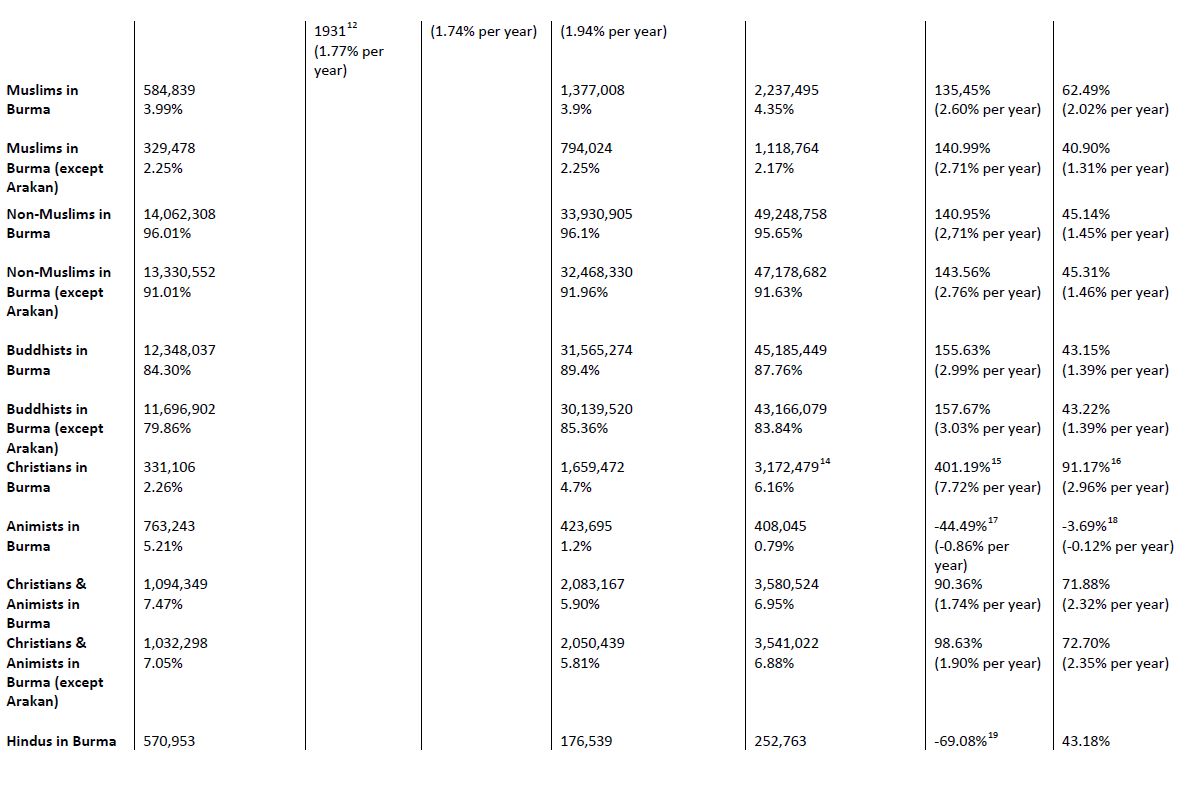
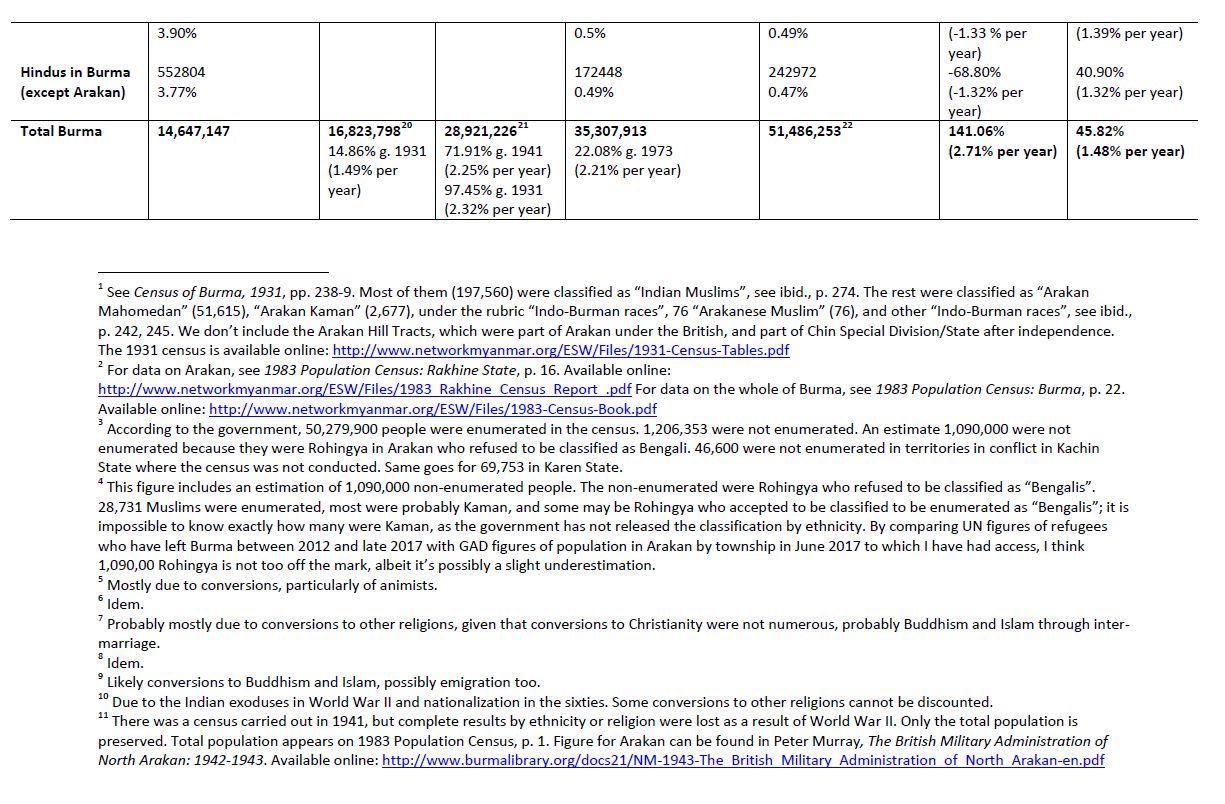

For updates click homepage here